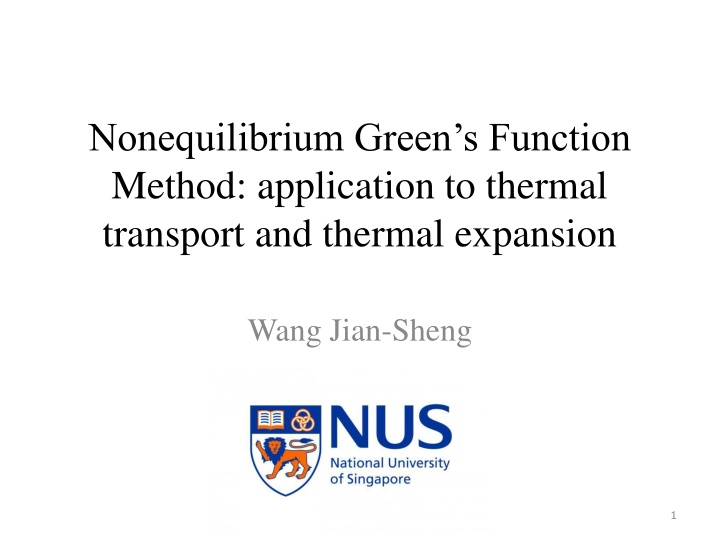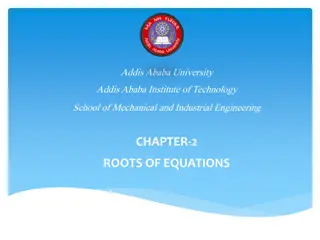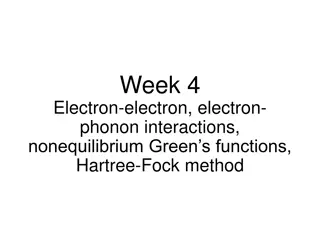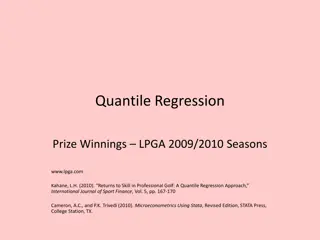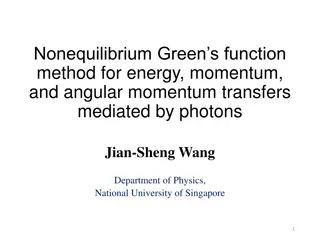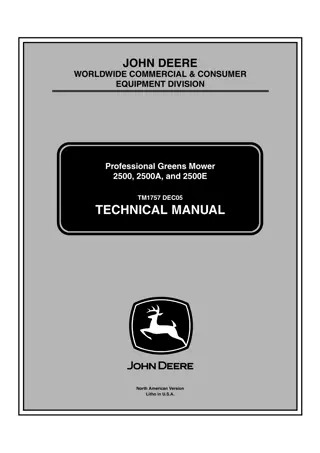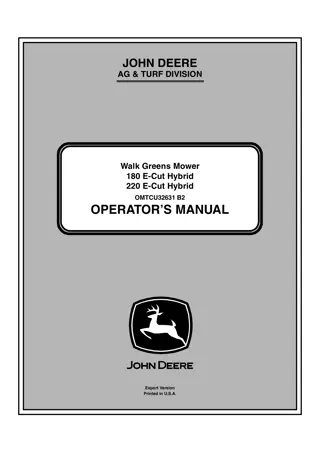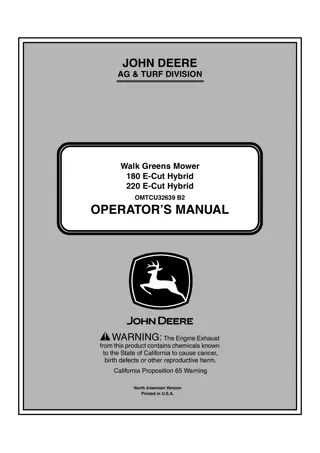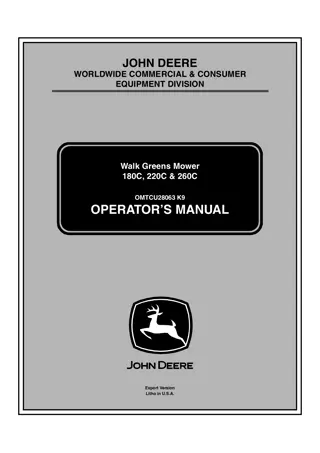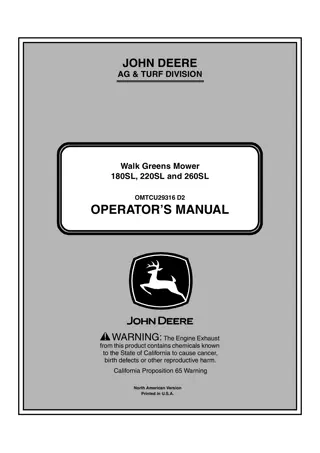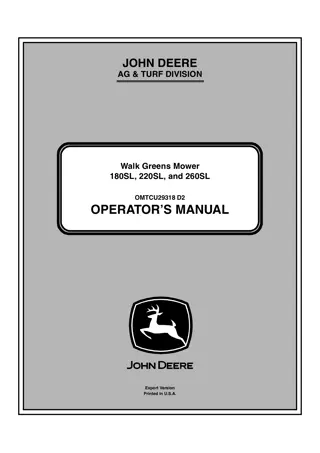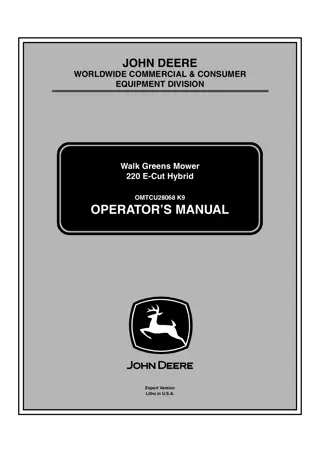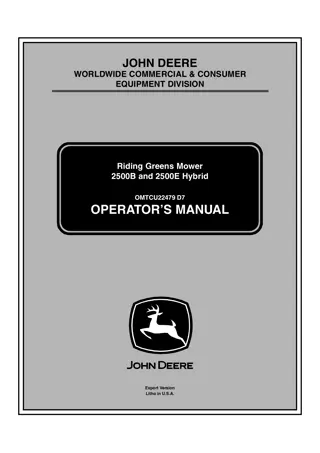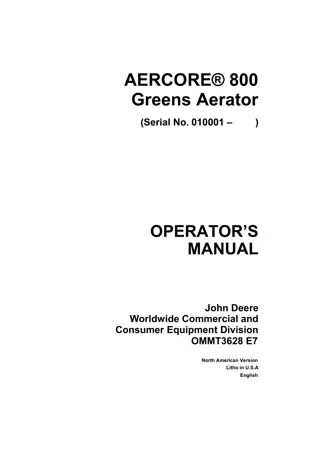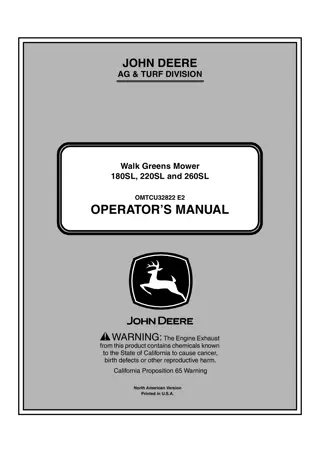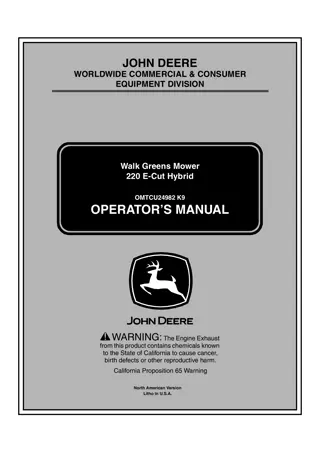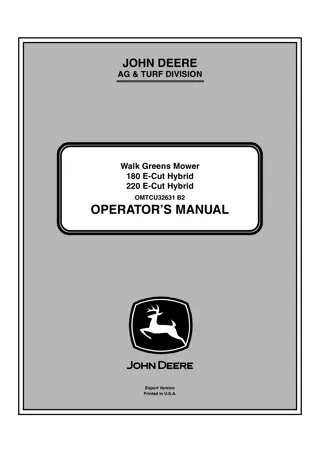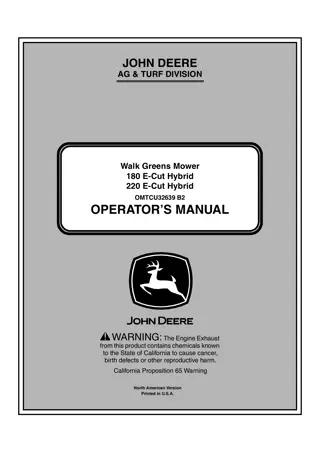Application of Nonequilibrium Greens Function Method
The application of Nonequilibrium Greens Function (NEGF) method to thermal transport and thermal expansion is explored in this study by Wang Jian-Sheng. The content covers an introduction to NEGF, heat transport, counting statistics, and the problem of thermal expansion. Detailed insights into the NEGF method, including evolution operators on contour, contour-ordered Greens function, relation to other Greens functions, Heisenberg equation on contour, thermal conduction at a junction, three regions analysis, and Dyson equations and solutions are provided.
Download Presentation

Please find below an Image/Link to download the presentation.
The content on the website is provided AS IS for your information and personal use only. It may not be sold, licensed, or shared on other websites without obtaining consent from the author.If you encounter any issues during the download, it is possible that the publisher has removed the file from their server.
You are allowed to download the files provided on this website for personal or commercial use, subject to the condition that they are used lawfully. All files are the property of their respective owners.
The content on the website is provided AS IS for your information and personal use only. It may not be sold, licensed, or shared on other websites without obtaining consent from the author.
E N D
Presentation Transcript
Nonequilibrium Greens Function Method: application to thermal transport and thermal expansion Wang Jian-Sheng 1
Outline An introduction to nonequilibrium Green s function (NEGF) method Heat transport, counting statistics Problem of thermal expansion 2
NEGF Our review: Wang, Wang, and L , Eur. Phys. J. B 62, 381 (2008); Wang, Agarwalla, Li, and Thingna, Front. Phys. (2013), DOI:10.1007/s11467-013-0340-x 3
Evolution Operator on Contour i 2 ( , ) = exp , U T H d 2 1 2 1 c 1 ( , ) ( , ) U = = ( , ), U U 3 2 2 ( , ) , 1 3 1 3 2 1 1 ( , ) U U 1 2 2 1 1 2 + + ( ) = ( , ) ( , ) U t O OU t 0 0 4
Contour-ordered Greens function i ( , ') = ( ) ( ') u T G T u C i ( ) H d = ( ) t T u u e T Tr C 0 ' C Contour order: the operators earlier on the contour are to the right. See, e.g., H. Haug & A.-P. Jauho. t0 5
Relation to other Greens functions ( , ), t = = or , t ++ + G G G G ( , ') = ' ( , ') t t or G G G + ++ + = = = = t , G G G G + t , G G G G t0 6
Heisenberg Equation on Contour i 2 ( , ) = exp , U T H d 2 1 2 1 c 1 + + ( ) = ( , ) ( , ) U t O OU t 0 0 ( ) dO = [ ( ), O ] i H d 7
Thermal conduction at a junction Left Lead, TL Right Lead, TR semi-infinite Junction Part 8
Three regions 1 u u L L 2 = = = , , u u u u u C L L C u R i = = T ( , ) ' ( ) ( ) ' , , , , G T u u L C R C 9
Dyson equations and solution = + , G g g G 0 0 C C = + G G G G 0 0 n ( G ) 1 + = + 2 r 0 C r ( ) , 0 G i I K = r 0 a 0 G G 0 ( G ) I 1 = 1 r r 0 r n ( G ( ) , G = + + + r a r r n a n a G ) ( ) G G G I G 0 n = + r a ( G ) G n 10
Energy current dH dt = = T L LC I u V u L L C t a L ( ', ) t t t ( ', ) t t t = + r CC ( , ') t t ( , ') t t ' i G G dt L CC t 0 + 1 ( ) = [ ] LC Tr V G d CL 2 + 1 ( ) = [ ] [ ] + [ ] [ ] r CC a L Tr G G d L CC 2 11
Landauer/Caroli formula + 1 dH dt ( )( ) = = r CC a CC Tr I G G f f d L L L R L R 2 0 ( ) = r a i I I , I L R L 2 = = = + r a , G G G i f f L L R R + a r r a ( ) G G iG G L R 12
Ballistic transport in a 1D chain Force constants k 0 k + k 2 0 k k k 0 = + k K 2 k k k 0 + 0 2 k k 0 0 0 k Equation of motion u ku = + + = , 1,0,1,2, (2 ) , k k u ku j 1 0 1 j j j j 13
Lead self energy and transmission 0 0 0 0 0 0 k 0 0 0 0 0 T[ ] = L 1 0 = 2 1 r C ( ) , G K L R j k | | = r jk G ( ) 1 k + 2 1, 0, 4 k k k ( ) [ ] = = r a 0 0 Tr T G G L R otherwise 14
Heat current and conductance + d ( ) = [ ] I T f f L L R 2 0 1 I f d T max = = = lim L T , f L 2 1 T T e T R L R min 2 2 B k T h = , 0, 0 T k 0 3 15
Arbitrary time, transient result 1 ln 0 G Z L = A Tr ln( 1 ) 2 = + + A L ( , ) ' ( ( ), ' ( ' )) ( , ) ' x x L L n ln i Z n = = n Q x ( ) 2 = 0 A L ln i 1 Z = = = Tr Q Q G 0 ( ) 2 ( ) i = 0 2 ln i Z 2 = = 2 2 Q Q Q 2 ( ) in ( long time) Q t I 16 M
Numerical results, 1D chain 1D chain with a single site as the center. k= 1eV/(u 2), k0=0.1k, TL=310K, TC=300K, TR=290K. Red line right lead; black, left lead. From Agarwalla, Li, and Wang, PRE 85, 051142, 2012. 17
Thermal Expansion Gr neisen theory ln ln 1 BV = = , c 3 V NEGF compute the displacement of each atom <uj>. It is obtained by the standard Feynman-diagrammatic expansion with respect to nonlinear interactions. 18
Average displacement, thermal expansion One-point Green s function i G T u = ( ) ( ) j C j = ( ', '', ''') ( ', '') ( ''', ) 0 lm 0 nj ' '' ''' d d d T G G lmn lmn = = = r nj ( 0) [ 0] G T G t G j lmn lm lmn dG dT 1 x i M = j j j 20
Connection, see Jiang, Wang, Wang, Park, arXiv:1408.1450. c 1 L ( ) = NEGF N * m 1 T S S K lmn l nN 2 lmn ln ln L = = * m T S S lmn l n 2 3 V lmn = / R L n n FL B = = = 1 NEGF N , u K F n nN n 21
Thermal expansion (a) Displacement <u> as a function of position x. (b) as a function of temperature T. Brenner potential is used. From Jiang, Wang, and Li, Phys. Rev. B 80, 205429 (2009). Left edge is fixed. 22
Graphene Thermal expansion coefficient The coefficient of thermal expansion v.s. temperature for graphene sheet with periodic boundary condition in y direction and fixed boundary condition at the x=0 edge. is onsite strength. From Jiang, Wang, and Li, Phys. Rev. B 80, 205429 (2009).
Phonon Life-Time t + 1 ( ) i t q q 2 = r q r q , ( ) G G t e q ( ) 2 + i [ ] 2 q r n q , r n q Re [ ] 2 , , q q q For calculations based on this, see, Xu, Wang, Duan, Gu, and Li, Phys. Rev. B 78, 224303 (2008). q r n q Im [ ] , q q 1 3 = 2 q q c v q q 24
Summary NEGF: powerful tool for steady state and transient, best for ballistic system, difficult for interaction systems Thermal expansion problem: NEGF does not need to assume uniform expansion, suited for any nanostructure or bulk 25
Acknowledgements NEGF, transport: Wang Jian, L Jingtao, Eduardo C Cuansing, Zhang Lifa, Bijay Kumar Agarwalla, Li Huanan Thermal expansion: Jiang Jinwu (now at Shanghai Univ) 26
